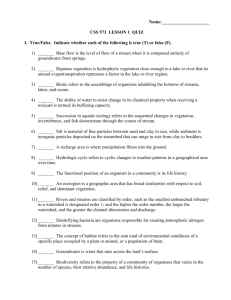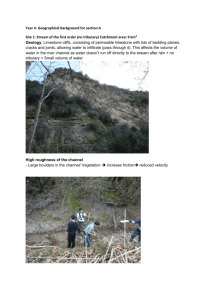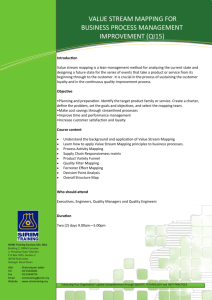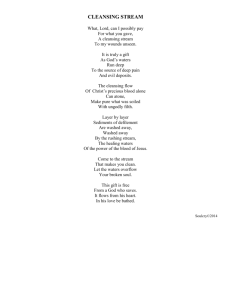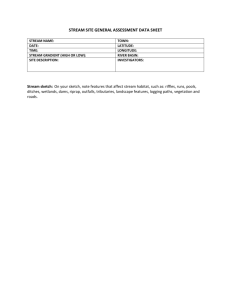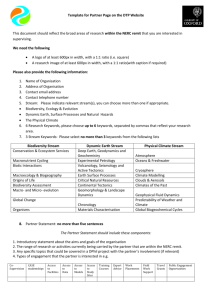INCOG Flyer on Field Form Contents
advertisement
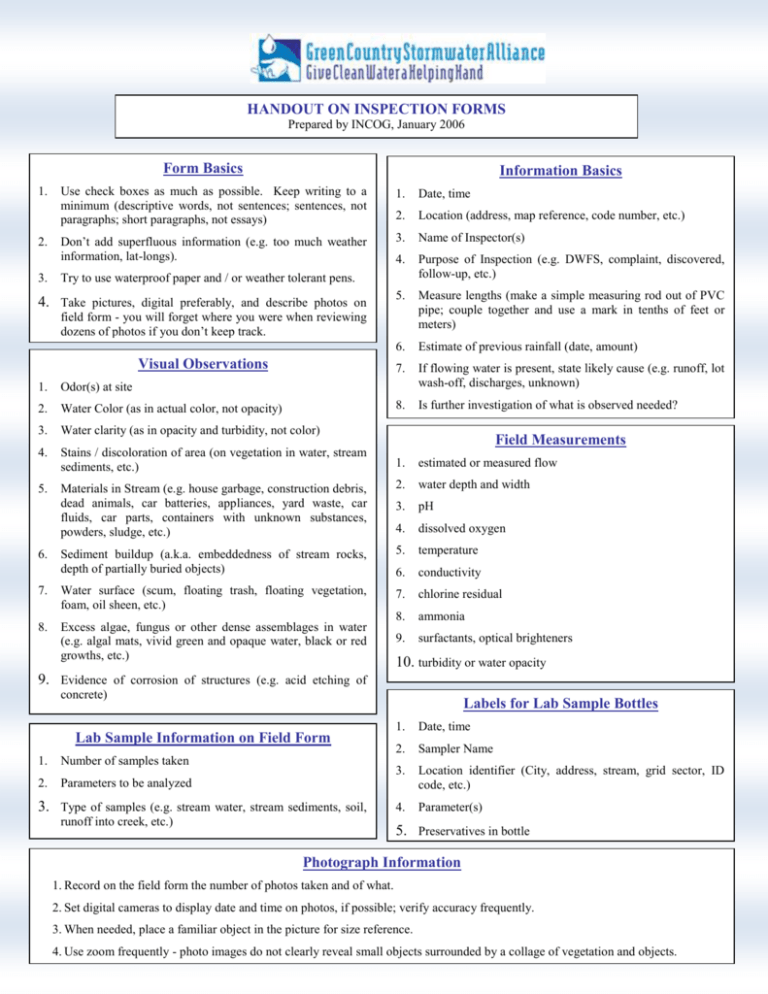
HANDOUT ON INSPECTION FORMS Prepared by INCOG, January 2006 Form Basics 1. 2. 3. Information Basics Use check boxes as much as possible. Keep writing to a minimum (descriptive words, not sentences; sentences, not paragraphs; short paragraphs, not essays) 1. Date, time 2. Location (address, map reference, code number, etc.) Don’t add superfluous information (e.g. too much weather information, lat-longs). 3. Name of Inspector(s) 4. Purpose of Inspection (e.g. DWFS, complaint, discovered, follow-up, etc.) 5. Measure lengths (make a simple measuring rod out of PVC pipe; couple together and use a mark in tenths of feet or meters) 6. Estimate of previous rainfall (date, amount) 7. If flowing water is present, state likely cause (e.g. runoff, lot wash-off, discharges, unknown) 8. Is further investigation of what is observed needed? Try to use waterproof paper and / or weather tolerant pens. 4. Take pictures, digital preferably, and describe photos on field form - you will forget where you were when reviewing dozens of photos if you don’t keep track. Visual Observations 1. Odor(s) at site 2. Water Color (as in actual color, not opacity) 3. Water clarity (as in opacity and turbidity, not color) 4. Stains / discoloration of area (on vegetation in water, stream sediments, etc.) 5. Field Measurements 1. estimated or measured flow Materials in Stream (e.g. house garbage, construction debris, dead animals, car batteries, appliances, yard waste, car fluids, car parts, containers with unknown substances, powders, sludge, etc.) 2. water depth and width 3. pH 4. dissolved oxygen Sediment buildup (a.k.a. embeddedness of stream rocks, depth of partially buried objects) 5. temperature 6. conductivity 7. Water surface (scum, floating trash, floating vegetation, foam, oil sheen, etc.) 7. chlorine residual 8. Excess algae, fungus or other dense assemblages in water (e.g. algal mats, vivid green and opaque water, black or red growths, etc.) 8. ammonia 9. surfactants, optical brighteners 6. 10. turbidity or water opacity 9. Evidence of corrosion of structures (e.g. acid etching of concrete) Labels for Lab Sample Bottles Lab Sample Information on Field Form 1. Number of samples taken 2. Parameters to be analyzed 3. Type of samples (e.g. stream water, stream sediments, soil, runoff into creek, etc.) 1. Date, time 2. Sampler Name 3. Location identifier (City, address, stream, grid sector, ID code, etc.) 4. Parameter(s) 5. Preservatives in bottle Photograph Information 1. Record on the field form the number of photos taken and of what. 2. Set digital cameras to display date and time on photos, if possible; verify accuracy frequently. 3. When needed, place a familiar object in the picture for size reference. 4. Use zoom frequently - photo images do not clearly reveal small objects surrounded by a collage of vegetation and objects.

